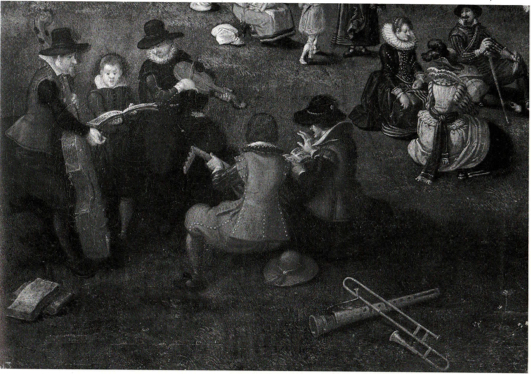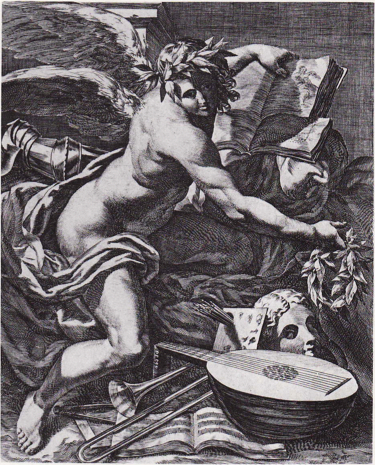Below are two new 17th century images, one a painting and the other a print. The painting, shown here only in a detail of one portion of the work, has been attributed to Sebastian Vranckx and Jan Brueghel the Younger (in collaboration) and is titled The Royal Palace at Brussels. It has been dated between 1625 and 1630. A trombone rests on the ground, along with a dulcian, near an ensemble of 2 voices and 3 strings that is informally performing outdoors. Noteworthy features of the trombone include its flat stays and a slide section apparently out of proportion with the bell (Kenyon de Pascual, Two Contributions).
The second image, an anonymous mannerist print titled Genius of the Arts, dates from approximately the same time, circa 1620 (Moir pl. 44). Below the angel (whose toga is apparently on the move) is a fairly clear representation of a trombone. The trombone is noteworthy for its bell flare, which would appear to be slightly more pronounced than that of other trombones of the time period. The image belongs to an interesting group of allegorical art works from the 17th century (1st half) that feature trombones, including Brueghel’s Allegory of Hearing, Van Kessel’s Allegory of Music, and a Czech wall painting from Rozmberk Castle titled Allegory of Music.

